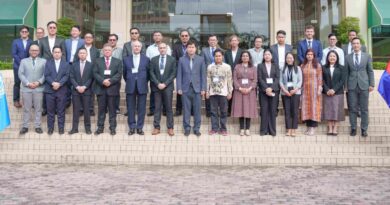New Mining Projects Face Hurdles Amidst Soaring Demand for Energy Transition Minerals
Global Mining Industry – The development of new mining projects is facing significant barriers, according to a recent EY report, which identifies it as the 8th top risk and opportunity for mining and metals companies in 2025. The report emphasizes the critical need for new projects to meet the surging demand for minerals required for the energy transition, yet highlights the complex challenges that must be overcome to bring these projects to fruition. These challenges include regulatory hurdles, high capital costs, and a scarcity of skilled labor, presenting a significant obstacle to the industry’s ability to keep pace with growing demand.
The report, based on a survey of 353 senior mining and metals leaders globally, reveals that over the next 30 years, the industry will need to mine more mineral ores than humans have mined over the last 70,000 years to meet the exponential demand for minerals critical to the energy transition. This unprecedented demand underscores the urgency of addressing the barriers to new project development.
- Regulatory Red Tape: The report notes that regulatory issues are prolonging the time from discovery to production. This includes long delays to obtain permits, navigating overlapping regulations from different authorities, and mitigating litigation risks. The report points out that it takes 29 years to develop a mine in the US, second only to Zambia’s 34 years.
- High Costs: The capital intensity of new projects is increasing due to inflation, lower ore grades, and infrastructural issues. For example, the initial capital expenditure for the Simandou iron ore mine is estimated to be approximately US$11.6b.
- Lack of Skilled Workers: A shortage of skilled workers is making timely project delivery more difficult. The mining sector is seeing a shift in the workforce towards other energy transition projects, exacerbating the issue.
- Increased Taxes and Royalties: Higher taxes and royalties in some markets also present an additional barrier to new projects. In Chile, mining companies face a tax burden of 41% to 44%.
“Filling the demand gap will require overcoming multiple complex barriers to new projects,” the report states.
The report suggests that miners are taking diverse approaches to overcome these hurdles.
Miners are connecting with stakeholders during initial project stages to resolve conflicts and expedite approvals. Deepening these connections can help earn trust and resolve conflicts.
“Deepening connections with all stakeholders, particularly during the initial project stages, can earn trust and help resolve conflicts,” the report notes.
The report also highlights that integration across the supply chain can also streamline activities from exploration to production and enable more accurate demand planning. This can help to significantly reduce capital expenditure and mitigate risks when developing new projects.
Historically, new mining projects have faced challenges related to lengthy development times and high costs. The current demand for critical minerals needed for the energy transition is increasing the pressure to address these challenges.
Technically, the report notes that modern mines require higher upfront costs, particularly large underground block cave mines, which present technical challenges and take years to ramp up. It also notes that a lack of standardization can create pricing complexities. For example, there is not yet a globally recognized standard lithium product.
The report also suggests that new projects should be developed with sustainability, automation and electrification in mind, which requires a different set of skills. It stresses that this provides the ability to attract talent from outside the industry and from a more diverse pool of skills and abilities.

